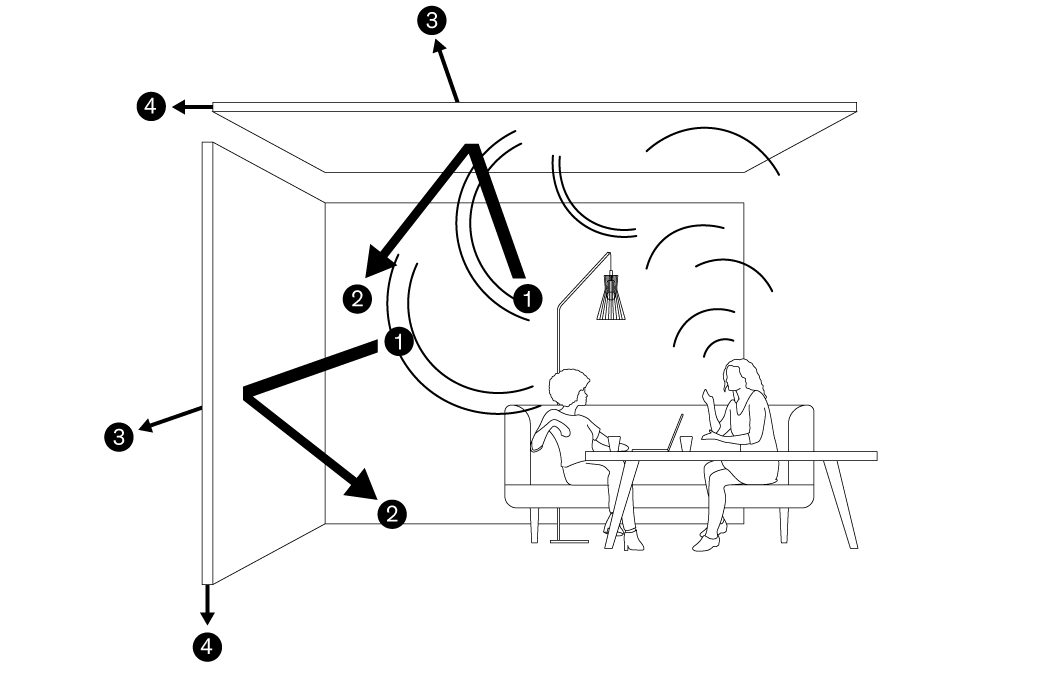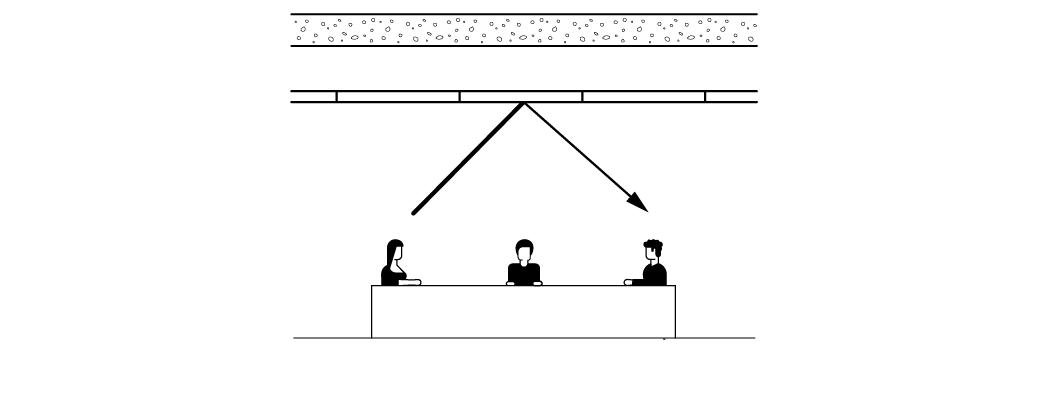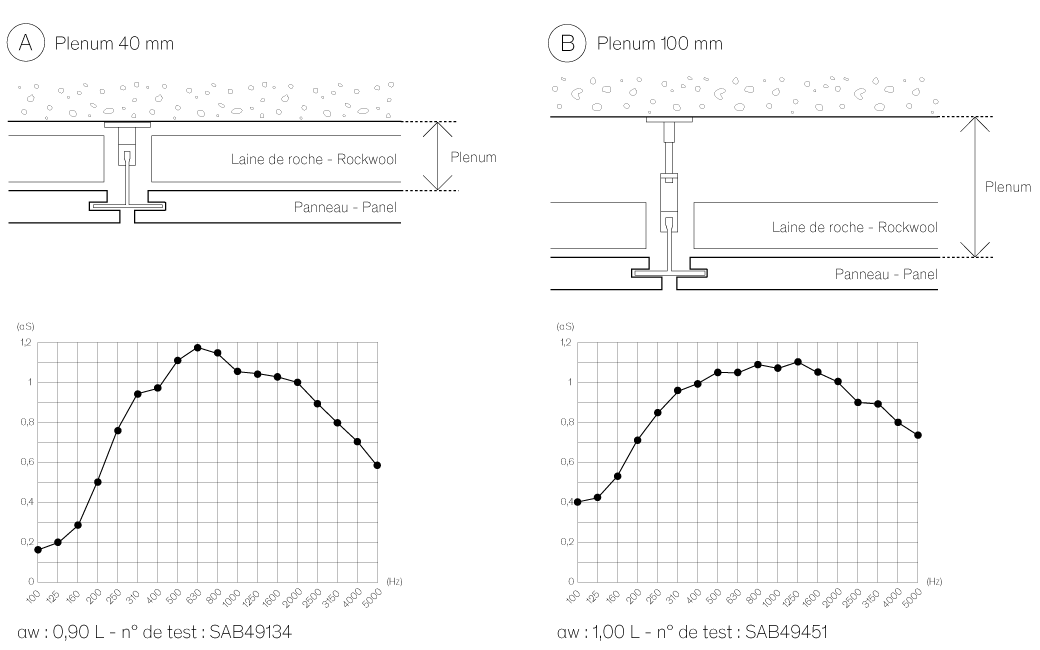Improving an interior space’s acoustic comfort
Acoustic characteristics
It is important to have good acoustics in a space to ensure good sound quality, speech intelligibility, concentration, comfort of use, and confidentiality.
When a sound wave hits a wall, several reactions occur:
- a part of the wave dissipates into the wall
- a part of the wave passes through the wall
- a part of the wave is reflected by the wall
The reflected wave (sound reflection) causes reverberation and echo, which, if they are too present, can generate acoustic discomfort inside an interior space.

1. Sound wave / 2. Reflected wave / 3. Transmitted wave / 4. Absorbed wave
Controlling sound quality
Acoustic comfort inside an interior space is achieved when there is a balance between sound absorption, reflection and diffusion.
Absorption :
Acoustic absorption refers to the capacity of a wall to partially absorb a sound wave and to send back to the point of emission only a portion of the energy received. This property helps to reduce the reverberation inside a space, to increase acoustic comfort and speech intelligibility.

Reflection:
Reflection is a physical phenomenon by which a surface reflects part of the sound waves that come in contact with it. The condition of the surface and the nature of the material impact the reflection of the sound waves.

Diffusion :
When a sound wave comes in contact with a flat obstacle, as in the case of a mirror, the angle of reflection is equal to the angle of incidence. If the surface is not flat and is of a certain shape, the obstacle becomes a medium of diffusion and the sound wave is reflected in all directions.

For good control of sound quality, the choice of materials, whether they are absorbing, reflecting or diffusing, and their position in the interior space, will have a direct impact on one or more of these acoustic characteristics.
Solutions for improving acoustic comfort
Obersound acoustic panels:
Their purpose is to improve acoustic comfort inside an interior space by reducing sound reflection. When installed on walls or ceilings, they improve speech intelligibility and sound clarity.
The perforations in the decorative covering give these panels an additional function: sound absorption. The partial absorption of sound waves significantly reduces the reverberation of sound and the effects of resonance or echo.
The sound absorption performance of an Obersound panel model is determined by:
- The average absorption coefficient αw. This coefficient varies between 0 and 1 :
- Very absorbent material = 1
- Highly reflective material = 0
- The values by frequencies (from the lowest 100Hz to the highest 4000Hz) listed in the sound absorption curve that allow a more accurate assessment of the performance according to a type of place and its use.

Using the ISO354 standard, these values are assessed in a laboratory inside a reverberation room where the panels are placed in situations based on scenarios described in a test report (type of foam or rock wool, plenum height…)
Obersound panels, which can be fitted with reliefs, changes in planes or curves, also contribute to a homogeneous sound diffusion.
Learn more about the Obersound acoustic panel collections
Tectonique 5.5 3D suspended ceilings:
The reliefs and openings on the Tectonic 5.5 ceilings make it possible to combine sound absorption, reflection but also, and especially, diffusion.

Absorption is generated by the position of the slabs and/or the spaces between them.
Reflection is controlled, a part of the waves is reflected while the other is transmitted to the system.
Diffusion is made possible thanks to the curves and changes of planes which limit the sound’s focus points.
Learn more about the Tectonic 5.5 3D suspended ceiling system
Plenum and acoustic performance:
The plenum is the residual space between the wall and the back of the panel (or between the primary ceiling and the suspended ceiling). Its volume affects reverberation time and sound wave dissipation and can therefore impact acoustic performance.








